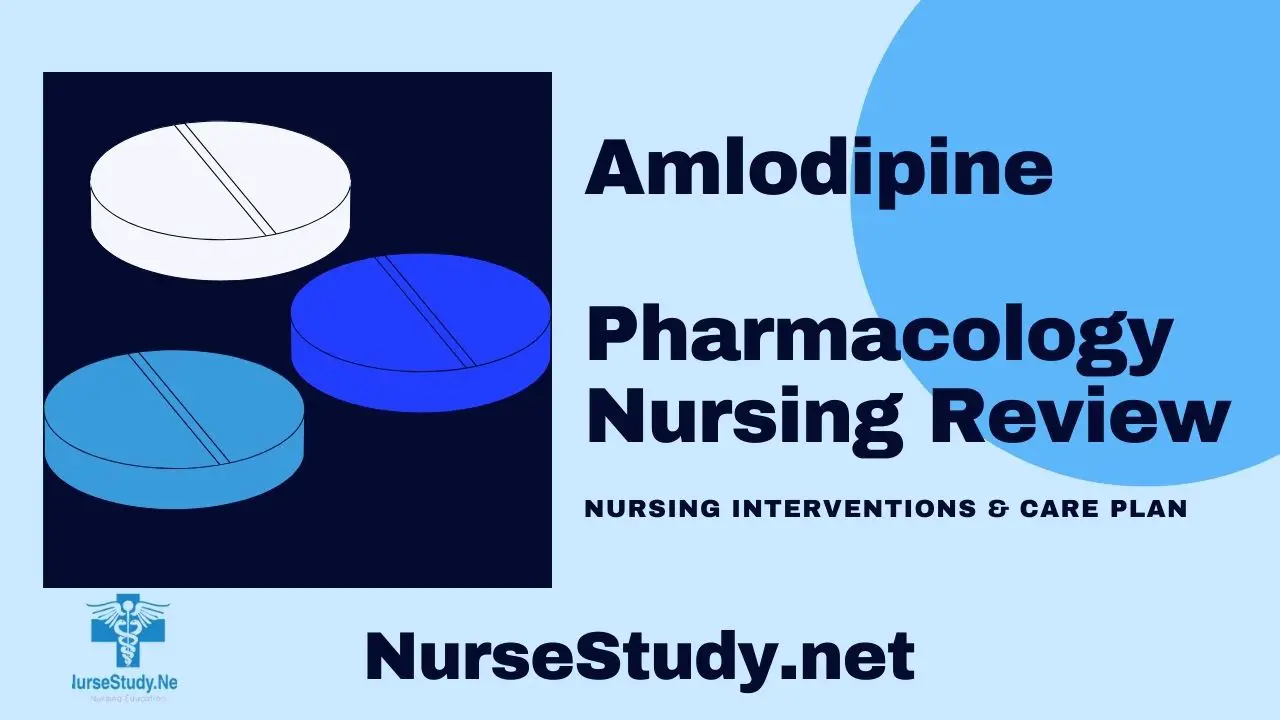Amlodipine is a calcium channel blocker used to treat hypertension and angina. It works by relaxing blood vessels and improving blood flow, making it an essential medication in cardiovascular care.
Generic names: Amlodipine besylate
Brand names: Norvasc, Katerzia, Consensi, Norliqva, Amvaz
Pharmacologic class: Calcium channel blocker (dihydropyridine)
Therapeutic class: Antihypertensive, antianginal
Mechanism of action: Amlodipine blocks calcium channels in vascular smooth muscle and cardiac muscle, reducing calcium entry into cells. This causes vasodilation and decreases peripheral vascular resistance, leading to reduced blood pressure and improved oxygen delivery to cardiac tissue.
Indications for use: Hypertension, chronic stable angina, vasospastic angina (Prinzmetal’s angina), and coronary artery disease.
Precautions and contraindications: Hypersensitivity to amlodipine or other dihydropyridines. Use with caution in patients with severe hepatic impairment, heart failure, or pregnancy. Monitor elderly patients closely for hypotension.
Drug Interactions
- Beta-blockers may enhance hypotensive effects
- CYP3A4 inhibitors (e.g., ketoconazole, clarithromycin) may increase amlodipine levels
- Simvastatin doses should be limited when used with amlodipine
- NSAIDs may decrease antihypertensive effectiveness
Adverse Effects
- Peripheral edema, especially in lower extremities
- Dizziness, headache, fatigue
- Flushing and palpitations
- Nausea, abdominal pain
- Somnolence
- Muscle cramps
- Rare but serious: angioedema, hepatitis
Administration Considerations
Available preparations: Tablets (2.5 mg, 5 mg, 10 mg), oral suspension
Dosages:
- Adults: Initial dose 2.5-5 mg once daily, maximum 10 mg daily
- Elderly or hepatic impairment: Start with 2.5 mg daily
- Time to peak effect: 6-12 hours
- Duration: 24 hours, allowing for once-daily dosing
Nursing Considerations for Amlodipine
Related Nursing Diagnoses
- Decreased cardiac output
- Ineffective peripheral tissue perfusion
- Risk for falls related to orthostatic hypotension
- Deficient knowledge related to medication regimen
- Risk for impaired skin integrity related to peripheral edema
Nursing Assessment
- Assess vital signs, especially blood pressure and heart rate, before administration and regularly during therapy.
- Monitor for signs of peripheral edema, particularly in ankles and feet.
- Assess for symptoms of angina if medication is being used for coronary artery disease.
- Evaluate liver function tests in patients with hepatic impairment.
- Assess for orthostatic hypotension by checking blood pressure lying, sitting, and standing.
Nursing Interventions
- Administer amlodipine at the same time each day to maintain consistent blood levels.
- Monitor for effectiveness by tracking blood pressure readings and angina episodes.
- Implement fall precautions for patients experiencing dizziness or orthostatic hypotension.
- Assess for and document the presence and degree of peripheral edema.
- Monitor for signs of fluid overload, especially in patients with heart failure.
Patient Teaching Associated with Amlodipine
- Take amlodipine exactly as prescribed, at the same time each day. Do not skip doses or stop taking the medication without consulting the healthcare provider.
- Rise slowly from sitting or lying positions to prevent dizziness and falls.
- Report significant swelling in ankles or feet, rapid weight gain, or difficulty breathing.
- Avoid grapefruit juice while taking amlodipine, as it can increase the medication’s effects.
- Continue monitoring blood pressure at home and keep a record to share with healthcare providers.
- Maintain good oral hygiene,e as amlodipine can cause gum enlargement in some patients.
- Store at room temperature, away from moisture and light.
This is not an all-inclusive list of possible drug interactions, adverse effects, precautions, nursing considerations, or patient instructions. Please consult further with a pharmacist for complete information.
References and Sources
- Ackley, B. J., Ladwig, G. B., Makic, M. B., Martinez-Kratz, M. R., & Zanotti, M. (2023). Nursing diagnoses handbook: An evidence-based guide to planning care. St. Louis, MO: Elsevier.
- Bc, J. B. D. A., Rosenthal, L., & Yeager, J. J. (2021). Study Guide for Lehne’s Pharmacology for Nursing Care. Saunders.
- Fares H, DiNicolantonio JJ, O’Keefe JH, Lavie CJ. Amlodipine in hypertension: a first-line agent with efficacy for improving blood pressure and patient outcomes. Open Heart. 2016 Sep 28;3(2):e000473. doi: 10.1136/openhrt-2016-000473. PMID: 27752334; PMCID: PMC5051471.
- Harding, M. M., Kwong, J., & Hagler, D. (2022). Lewis’s Medical-Surgical Nursing: Assessment and Management of Clinical Problems, Single Volume. Elsevier.
- Herdman, T. H., Kamitsuru, S., & Lopes, C. (2024). NANDA International Nursing Diagnoses – Definitions and Classification, 2024-2026.
- Ignatavicius, D. D., Rebar, C., & Heimgartner, N. M. (2023). Medical-Surgical Nursing: Concepts for Clinical Judgment and Collaborative Care. Elsevier.
- Lee EM. Calcium channel blockers for hypertension: old, but still useful. Cardiovasc Prev Pharmacother. 2023;5(4):113-125.
- Savage RD, Visentin JD, Bronskill SE, Wang X, Gruneir A, Giannakeas V, Guan J, Lam K, Luke MJ, Read SH, Stall NM, Wu W, Zhu L, Rochon PA, McCarthy LM. Evaluation of a Common Prescribing Cascade of Calcium Channel Blockers and Diuretics in Older Adults With Hypertension. JAMA Intern Med. 2020 May 1;180(5):643-651. doi: 10.1001/jamainternmed.2019.7087. PMID: 32091538; PMCID: PMC7042805.
- Silvestri, L. A. (2023). Saunders comprehensive review for the NCLEX-RN examination. St. Louis, MO: Elsevier.
